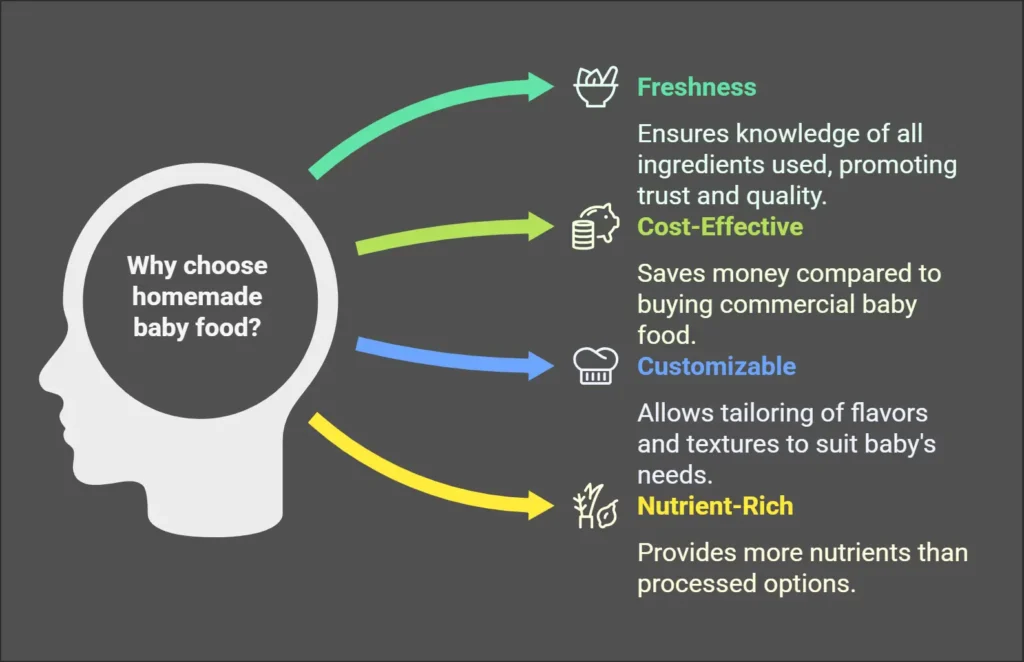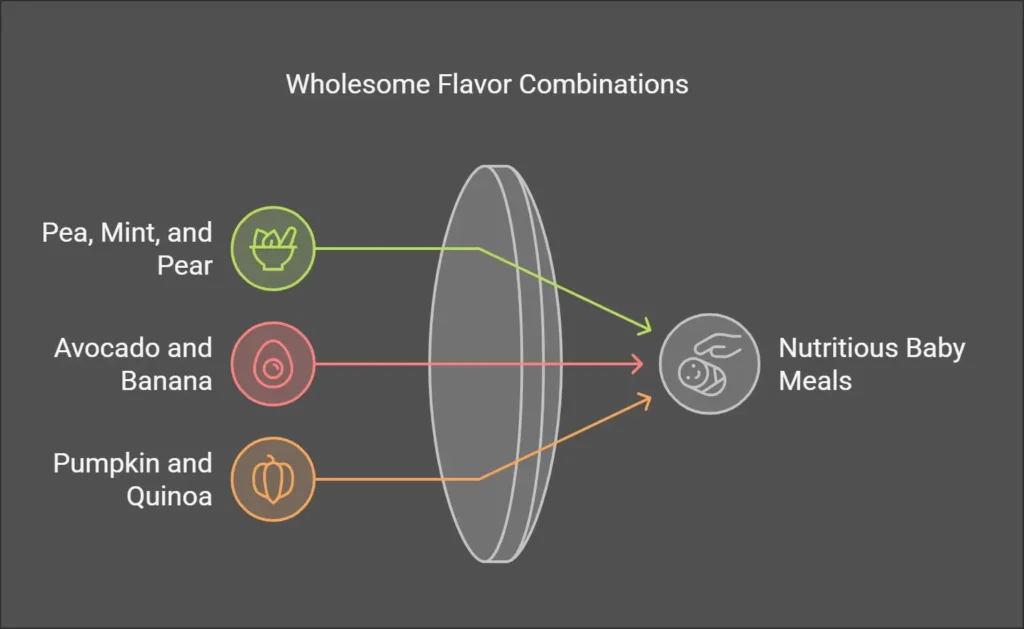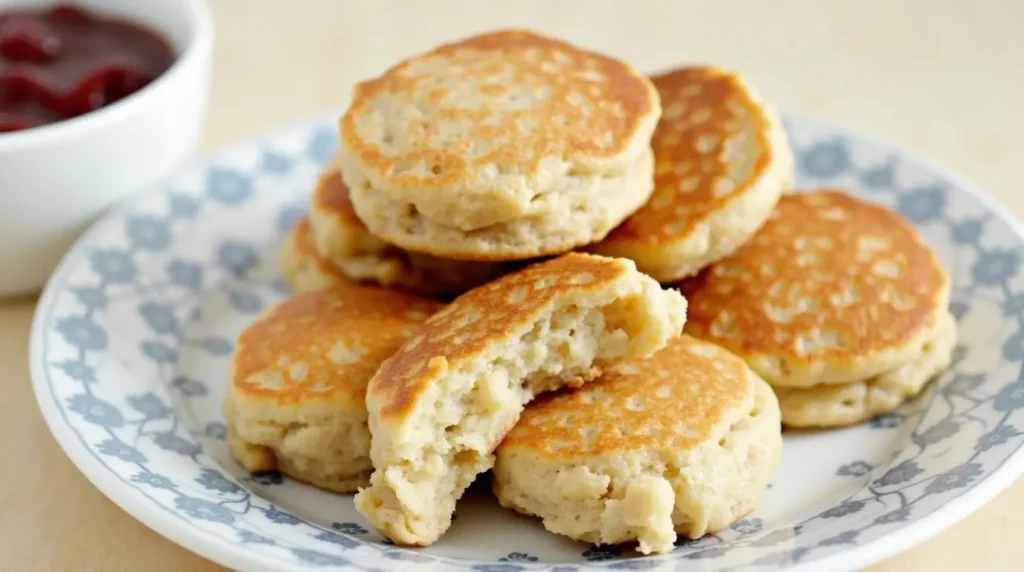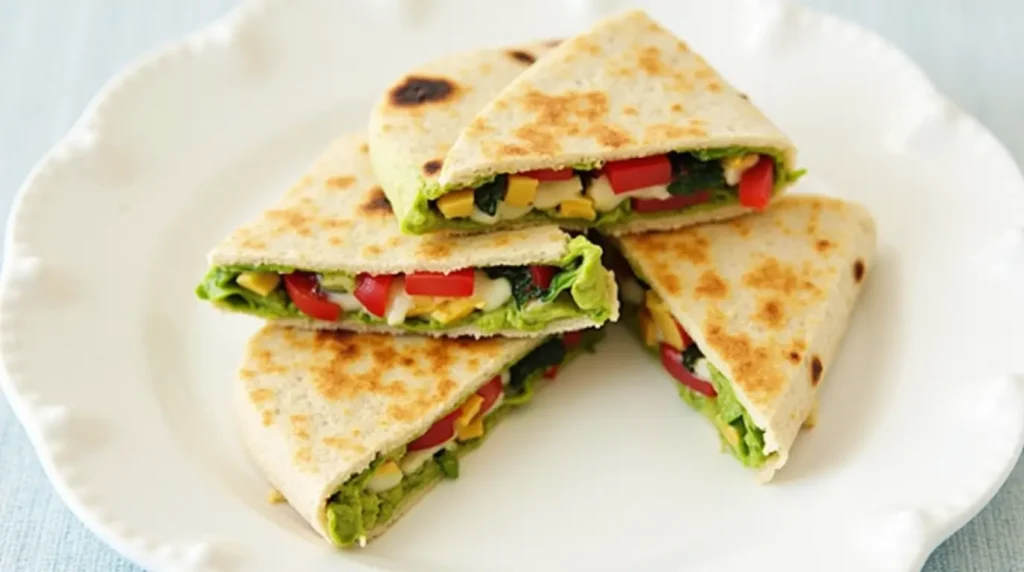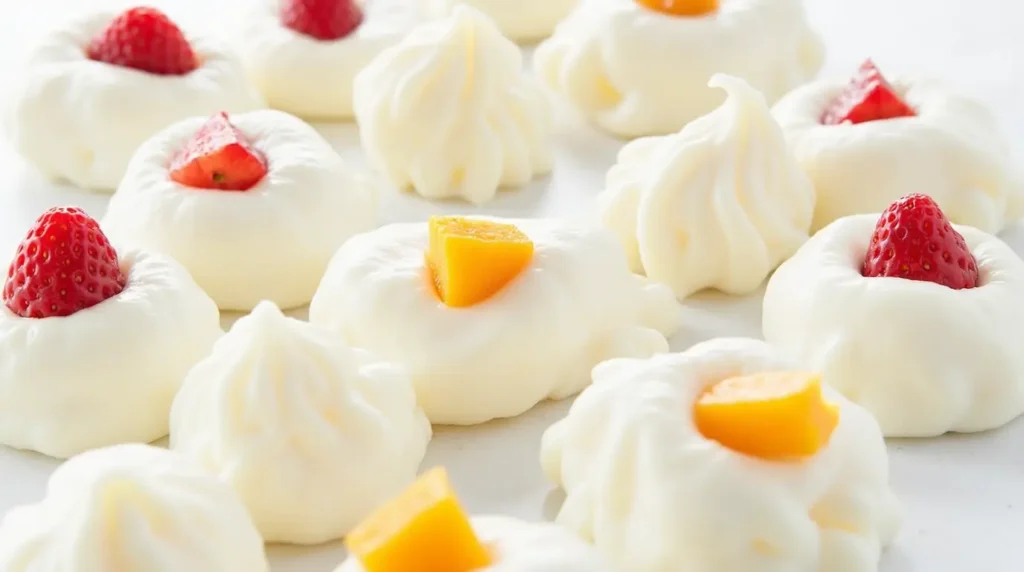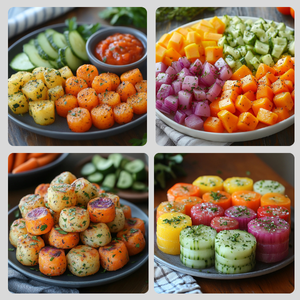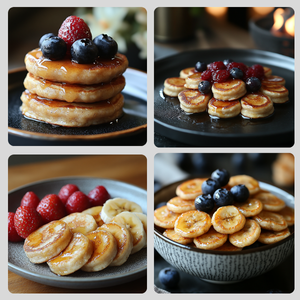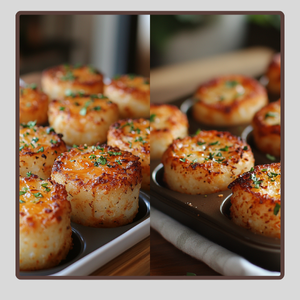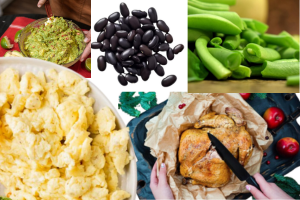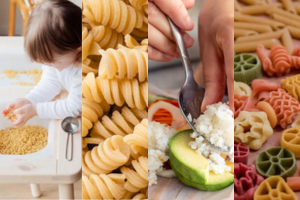Introduction
Embarking on introducing solid foods to your baby is an exciting and pivotal milestone. As a parent, you naturally want to provide the best nutrition possible, and what better way than crafting wholesome, homemade baby food Recipes? Not only does this ensure your little one receives fresh and nutrient-rich meals, but it also allows you to introduce a variety of flavors and textures tailored to their developing palate. This guide explores simple and delicious recipes like Creamy Carrot and Apple Puree, Banana and Avocado Mash, and Lentil and Vegetable Stew, designed to nourish your baby and make mealtime a delightful experience.
Creamy Carrot and Apple Puree
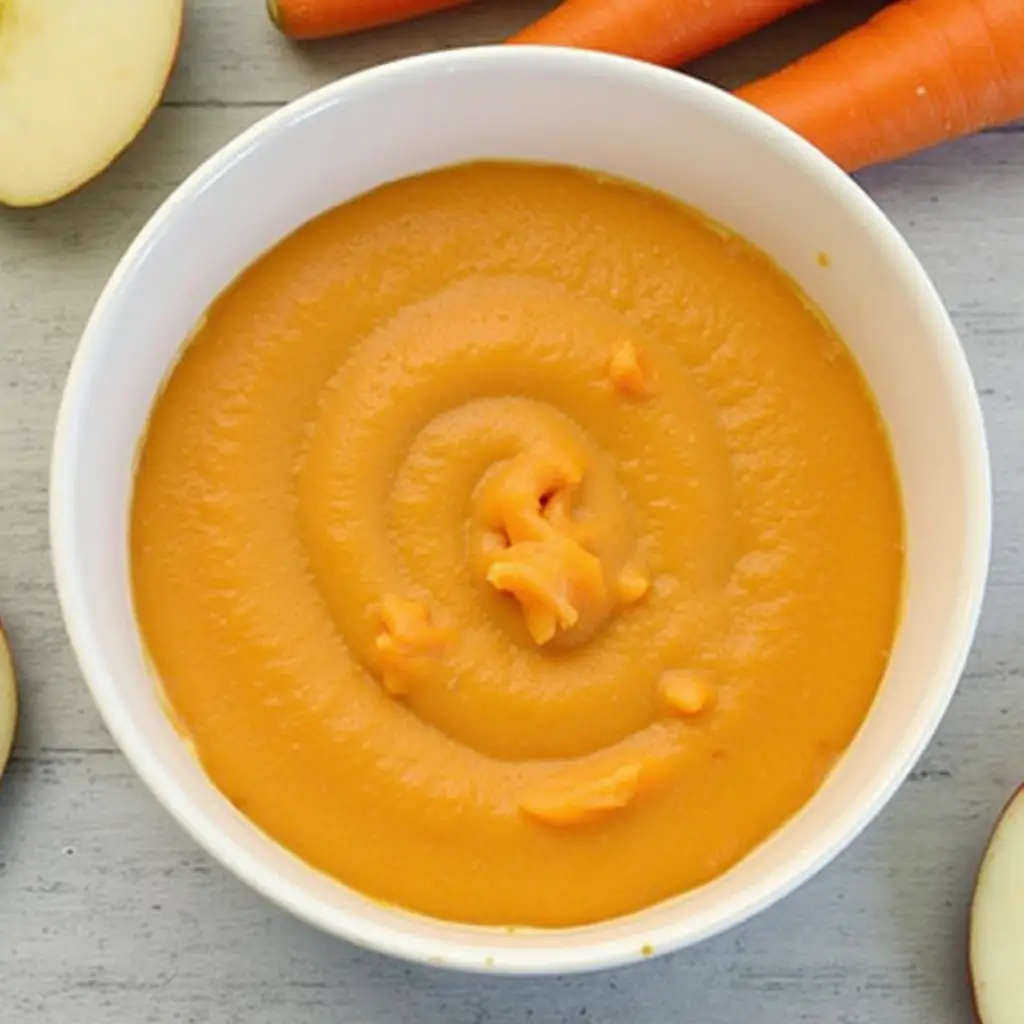
Ingredients:
- 2 large carrots, peeled and chopped
- 1 apple, peeled, cored, and chopped
- Water or breast milk/formula for thinning
Instructions:
- Steam carrots and apple pieces until tender.
- Transfer to a blender, adding a bit of water or milk.
- Puree until smooth, adjusting consistency as needed.
Banana and Avocado Mash

Ingredients:
- 1 ripe banana
- 1 ripe avocado
Instructions:
- Peel and pit the avocado; scoop the flesh into a bowl.
- Add the peeled banana.
- Mash together until smooth. Serve immediately to prevent browning.
Lentil and Vegetable Stew

Ingredients:
- 1/2 cup red lentils, rinsed
- 1 small carrot, peeled and diced
- 1 small potato, peeled and diced
- 2 cups low-sodium vegetable broth
Instructions:
- In a pot, combine all ingredients.
- Bring to a boil, then reduce heat and simmer until lentils and veggies are tender.
- Mash or blend to desired consistency.
Conclusion
Preparing homemade baby food is a rewarding endeavor that fosters healthy eating habits from the very start. Selecting fresh ingredients and crafting meals with love sets the foundation for your child’s lifelong relationship with food. The recipes shared, Creamy Carrot and Apple Puree, Banana and Avocado Mash, and Lentil and Vegetable Stew, are just the beginning. As you gain confidence, feel free to experiment with different combinations, always keeping your baby’s nutritional needs and taste preferences in mind. Here’s to joyful cooking and even more joyful eating!


